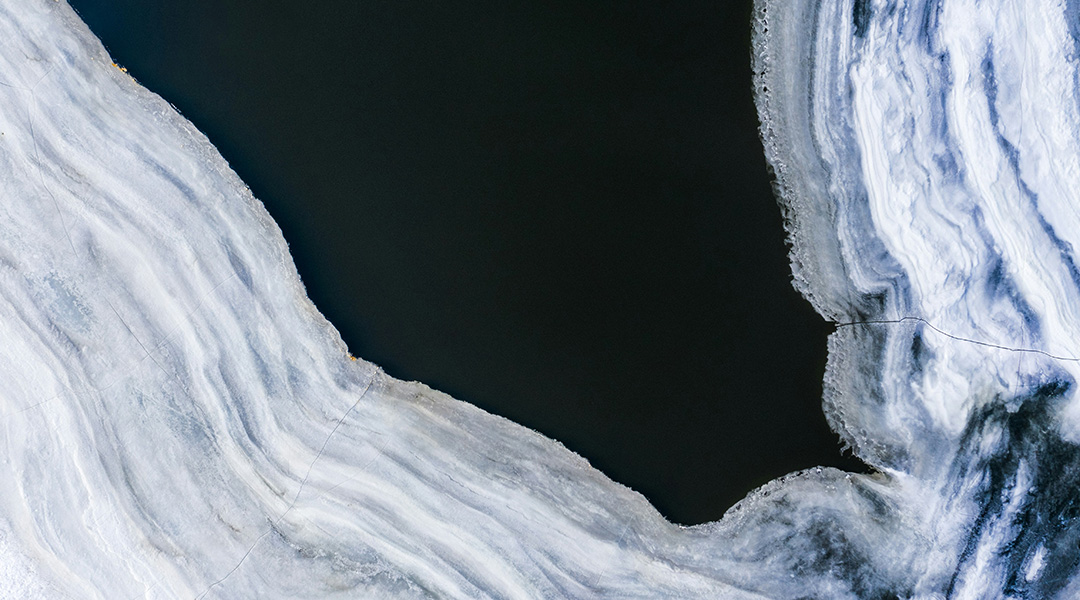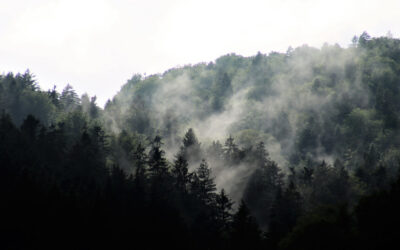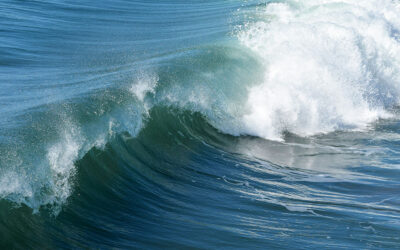Over nine days in March 2022, the Conger–Glenzer Ice Shelf in East Antarctica broke apart. Previously considered stable, the shelf had protected the ice sheet behind it. Its collapse, the first recorded in East Antarctica, raises concerns about potential sea-level rise linked to this understudied and underestimated expanse of ice in the White Continent.
Now, researchers have investigated 25 years of satellite imagery data to understand how and why the formerly fixed ice shelf suffered such a collapse. With limited past observations of such events, the team hope these analyses will shed light on future ice shelf collapses and their impact on sea-level rise.
“The collapse of the Conger-Glenzer ice shelf is significant because East Antarctica was once considered stable, and this event challenges that assumption. The [East Antarctic Ice Sheet] holds enough ice to raise global sea levels by 58 meters if fully melted — 18 times the volume of the [Western Antarctic Ice Sheet],” said Helen Fricker, a researcher at the University of California San Diego, La Jolla in an email. “Ice shelves act as buttresses, preventing inland ice from flowing into the ocean. When they collapse, ice flow accelerates, adding to sea level rise. This underscores the need to assess the stability of [East Antarctic Ice Sheet] ice shelves.”
The disappearance of an East Antarctic ice sheet
Ice shelves are thick platforms of ice that form where a glacier or ice sheet flows down to a coastline and extends out over the ocean. While anchored to land, they float on seawater and can vary greatly in size. These structures take up nearly two-thirds of the Antarctic coastline and help contain the Antarctic ice sheet through a process called buttressing. But as ice shelves thin, retreat, or break off into icebergs, leaving the Antarctic ice sheet exposed, speeding up the melting and flow of continental ice, radically raising the risk for a full-scale collapse.
All ice shelf collapses, first recorded since the 1990s with satellite imagery, have been restricted to the Western Antarctic Ice Sheet. As the atmosphere warms, pooling meltwaters on the surface have worn away at the ice, leading to large cracks and fractures that cause the shelf to weaken and break off. With the Western Antarctic Ice Sheet at great risk of rapid ice loss, little research has concentrated on the East Antarctic Ice Sheet.
“The disappearance of an East Antarctic ice shelf signals a shift in collapse drivers — from surface melt to ocean-driven processes — raising critical concerns for the region’s future,” added Fricker.
Along with a research team, Fricker analyzed satellite data and ocean temperatures to catalogue the changes seen in the Conger–Glenzer Ice Shelf over a 25 year period. With various satellite measurement techniques, the researchers could assess how the topography, thickness and area of the ice shelf changed in response to the warming ocean.
The team found four stages of retreat, based on how the ice shelf’s ~1,200 km2 surface area changed over the 25-year period. In the early 1990s, the shelf was about 200 m thick at its center. From 1997 to 2000, the ice sheet lost 85 km2 and separated from the Shackleton Ice Shelf, an extensive ice shelf running along the coast of East Antarctica, through calving. During this phase, the sheet decreased in area by about 28 km2 per year.
At an almost similar rate of about 25 km2 per year from 2000 to 2011, the sheet lost about 10% of its surface area in 2000. The average thickness of the shelf dropped from 163 m in 2004 to about 150 m in 2009. Furthermore, in 2011, the ice shelf retreated from a key pinning point — rocky outcrops or underwater ridges that act like anchors, holding ice shelves steady and keeping glacier flow in check. When ice shelves lose their grip on these stabilizers, they can collapse, unleashing faster glacier flow and driving sea-level rise.
Better understanding allows for better preparation
Ice shelf collapses such as this, while rare in the satellite record, are important contributors to modeling future collapses and changes in the ice sheet. “The broader implication is that with such rapid change that we haven’t accounted for well in model projections, sea level estimates are subject to big uncertainty from events like this,” said coauthor Catherine Walker, a researcher at the Woods Hole Oceanographic Institution, USA.
During the third stage, from 2012 to 2019, the thinning and calving of ice slowed down, with negligible variation in the shelf’s surface area. From 2019, thinning escalated, with larger fractures driving calving. Fracturing in thinning ice shelves is a critical sign of weakened structure and greater vulnerability to warming and other stressors. From 2002 to 2017, the total fracture length increased at the rate of 2 km per year to 14 km per year.
During the final stage, the ice shelf collapsed over nine days in March 2022. With several icebergs calved out, only about 65 km2 of the floating ice shelf remained, with a loss in height of nearly 90 m. As the shelf thinned, more of its base lost contact with deeper, cooler waters and was instead exposed to the warmer surface waters of the ocean, leading to longer fractures and eventual ice loss.
“[Unlike ice shelf collapses in the Western Antarctic Ice Sheet], the collapse was not due to surface melt and hydrofracture, but to a range of other mechanisms that all worked together to weaken the ice shelf. Ocean melting and calving were the main culprits, and this took many years,” said Fricker. “The final stage in the collapse was hastened by an atmospheric river — a storm with strong winds and ocean swells — that struck the area in March 2022. While the storm didn’t directly cause the collapse, it accelerated the process.”
“These findings in and of themselves don’t inform on policy, but hopefully they bring into focus that the polar regions are changing faster than we thought they would, and responding differently than we expected. All that is to say, it is important to continue studying these types of processes so we can improve our projections of how Earth will change in the future — how much, how fast? — and buoy resilience efforts,” added Walker. “That said, these changes originated decades ago, and some future change is already ‘baked in’; but we can do our best to limit future impacts from here on out.”
Reference: Catherine C. Walker, et al., Multi-decadal collapse of East Antarctica’s Conger–Glenzer Ice Shelf, Nature Geoscience (2024). DOI: 10.1038/s41561-024-01582-3
Feature image credit: Dave Hoefler on Unsplash

















